The Ten Main Facts
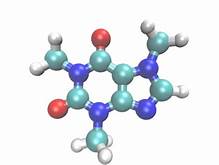
Caffeine is one of the main factors people consider in their choice of daily beverage. For some, it is the decider in their selection. For most, it is more a cautious concern.
This Tea Journey article aims to give you a neutral, fact-only and reliable summary of what we know about caffeine, instead of the opinions/claims/fears/recommendations that come up in online searches. It’s your choice, as are, say, sugar and salt, which are comparable in their appeal and health issues. This review aims to help you make it your informed choice.
There are two distinct issues for you to consider: (1) the factors that you control and (2) those that your body controls. You can change your diet and lifestyle. You can’t change your genes.
Here’s a quick summary of the main facts:
- Caffeine is a natural stimulant built up in the plant as it grows. In tea, it is concentrated in the leaf.
- The core metric is milligrams, with tea typically 20-40 mg and coffee 100 mg per serving. The consensual medical assessment is that the safe daily limit is 400 mg. The U.S. daily average is 300.
- It is a psychoactive drug with similar impacts on the body as heroin, though much milder and safer.
- It is medically safe for most people.
- It blocks the chemical that regulates sleepiness.
- Tea and coffee vary widely in their caffeine content. Most figures are approximations only and many are out of date.
- Caffeine’s positive effects include improvements in cognitive performance, and significant impacts on diseases, including Parkinson’s, Huntingdon’s and neurodegenerative disorders.
- The negative risks are largely acute rather than chronic. They mostly relate to sleep disorder and rapid withdrawal following high routine consumption.
- Many of its impacts are genetic and far-reaching. They strongly affect likelihood of caffeine consumption and its impacts. These differences are rarely addressed in tea and supplement marketing and lifestyle recommendations.
- The groups at significant risk from caffeine consumption are pregnant women, patients with symptoms relating to stress and anxiety, and younger people who are casual consumers of energy drinks overloaded with caffeine.
Caffeine is a Natural Stimulant
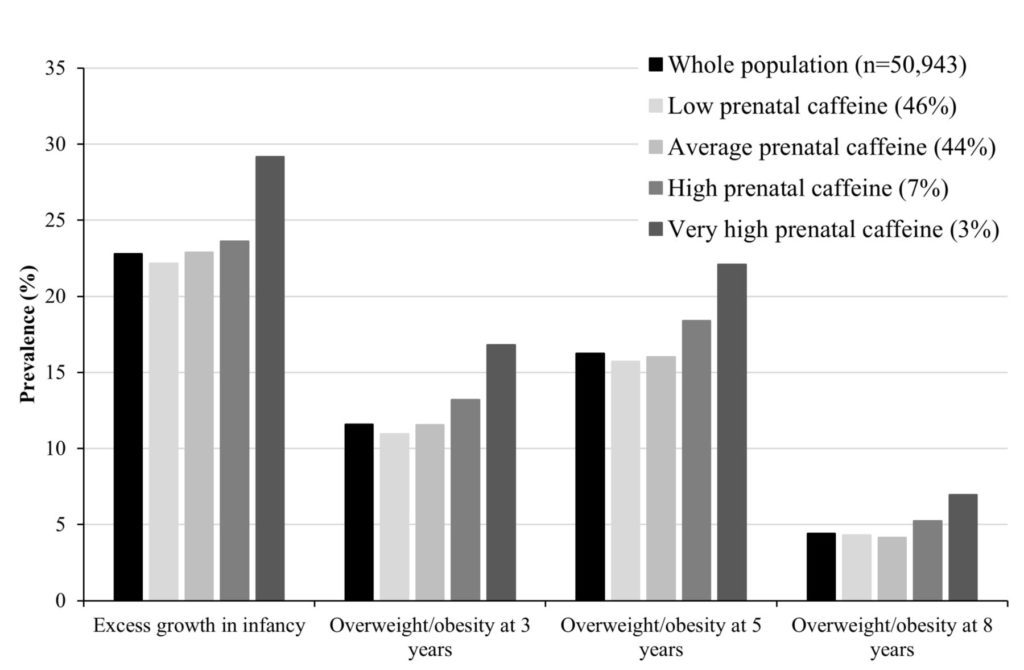 Caffeine is a natural stimulant produced by around 60 common plants, most notably tea, coffee, mate, and cocoa (and hence chocolate.) It is stored in the leaf (tea) and bean (coffee) and released by brewing in hot water. The temperature and time strongly affect how much caffeine will enter your body and trigger biochemical responses. The hotter the water and longer the steep, the more of the caffeine in the coffee grind or tea leaf that will be released. It is slowed or made faster by the size of the leaf. Tea bags will thus transfer caffeine faster than whole leaf.
Caffeine is a natural stimulant produced by around 60 common plants, most notably tea, coffee, mate, and cocoa (and hence chocolate.) It is stored in the leaf (tea) and bean (coffee) and released by brewing in hot water. The temperature and time strongly affect how much caffeine will enter your body and trigger biochemical responses. The hotter the water and longer the steep, the more of the caffeine in the coffee grind or tea leaf that will be released. It is slowed or made faster by the size of the leaf. Tea bags will thus transfer caffeine faster than whole leaf.
Caffeine appears to have evolved as a protective self-generated pesticide against the hordes of pests that particularly love the nutrient-rich leaves of tea and coffee bushes. Hence, the intensively bitter taste to spoil their treat. The million-year adaptation was a success, not because it made bugs feel comfortable and calm but overstimulated them.
This stimulant effect is the core to every aspect of caffeine, positive as well as negative.
The Core Metric is Milligrams
Caffeine is measured in milligrams. This permits easy comparability. Key metrics are:
- Recommended safe maximum 400 mg a day
- Average U.S. consumption 300 mg a day
- Milligrams per cup of tea: 20-50 typically: white 15, green 15-25, oolong 35, black 40-50. Mate 190. Coffee 100 on average, with vente, grande, Americano, turbo shots, etc. 200-400+
- Sodas 25-50 mg
- Energy drinks 100 to as high as 300 mg
- Caffeine supplements 200 mg
These are averages only with many exceptions. Note the ranges in these examples:
Caffeine is a Psychoactive Drug
A psychoactive drug is any chemical substance that directly acts on the central nervous system. Caffeine is fat soluble, so that it very quickly enters the bloodstream and penetrates brain cell membranes, typically within 30-45 minutes. It spreads faster than any other drug – and, yes, it is a drug. It works on the body in the same way as heroin but at a far lower level of intensity and impact. Both are addictive and withdrawal symptoms are marked, though manageable, for caffeine, with an extreme reaction of headaches and depression lasting 1-5 days.
It is the most commonly used psychoactive in the world. In the U.S., 90% of the adult population consumes caffeine daily.
It is Medically Safe
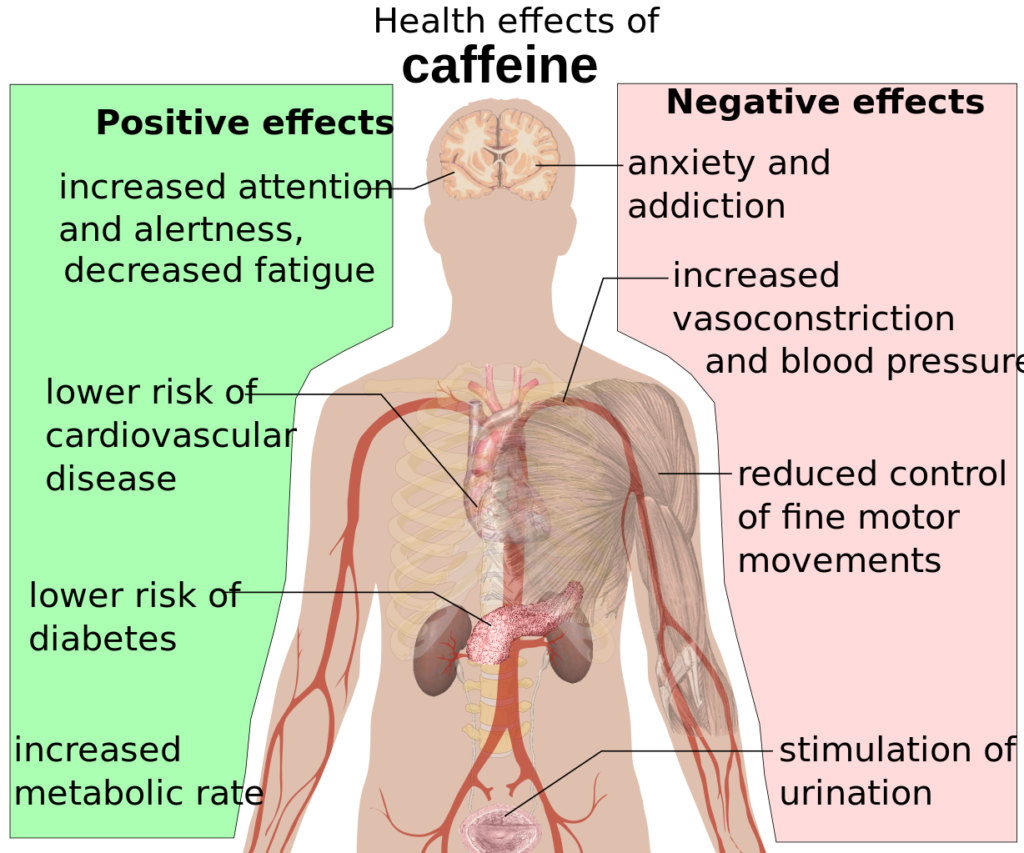
One universal conclusion among medical regulators is that caffeine is medically safe for the majority of adults and children above the age of two. It has been on the FDA’s GRAS list – generally recognized as safe – since 1958.
Its biochemical reactions are well-understood. Within a range of daily consumption that the medical community fairly unanimously agrees on, those reactions are safe and generally positive for most of the population. But they come with risks that increase if those limits are exceeded and if you are not like most people.
Caffeine does not damage tissues or cells. But it works basically by disrupting the delicate brain/heart/blood flow mechanisms and too much, too long can create a dependency in the central nervous system. It clears from the body in around 6 hours
Caffeine is not recommended for children under 12 but 45 mg is viewed as safe even for ones as young as 4. For 13-18 year-olds, the recommended limit is 100 mg: 3 sodas or a single energy drink or coffee.
It Blocks the Chemical that Regulates Sleepiness
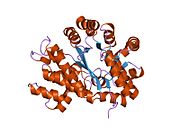 The most noted and physical, not just mental, impact of caffeine is on sleep. Caffeine works at the cellular level to block adenosine receptors, neurons that regulate calmness and relaxation. Adenosine accumulates in the brain the longer you are awake. That’s what makes you feel tired. When you sleep, your brain metabolizes all this. That’s what makes sleep restorative.
The most noted and physical, not just mental, impact of caffeine is on sleep. Caffeine works at the cellular level to block adenosine receptors, neurons that regulate calmness and relaxation. Adenosine accumulates in the brain the longer you are awake. That’s what makes you feel tired. When you sleep, your brain metabolizes all this. That’s what makes sleep restorative.
Adenosine is present in every cell in the body and receptors in every brain cell. There are wide genetic differences among the body’s adenosine receptors. These affect how quickly you metabolize caffeine, your tolerance and the best timing for you to take a wake up drink versus avoid kept awake.
Tea and Coffee Vary Widely in Caffeine Levels
By weight, tea contains more caffeine than coffee, but not by cup. A spoonful of tea contains on average 25 mg for green, 40 for black and 75 for matcha tea. Coffee averages 100 mg for a small 8-ounce cup, with espresso lower than drip; grandes, ventes and colossal bucket magnums can easily double the dosage.
Caffeine in drip coffee, for instance, is higher per milliliter than regular percolated coffee. Espresso is much more caffeine-loaded. Black tea varies from around 20 milligrams when brewed for two minutes to 50 mg at five minutes. A white tea made from the finest buds has 75 mg. A white that contains more mature leaf and is less packed with the health-associated nutrients may be 25.
Teas harvested in summer are higher in caffeine since the plant is at its peak of nutrients. Tea bags are higher in caffeine effect than the equivalent loose leaf. They release the caffeine far more quickly because their tiny dust-sized fragments have a larger surface area exposed to the water.
Decaffeinated tea sounds like a good idea and the packaging will make it seem even better as “naturally decaffeinated.” It isn’t at all natural, but because the chemical solvent ethyl acetate used in the most common process is found in plants, the word can be legally used.
The differences among teas are generally of little impact if your daily consumption is six or fewer cups.
Caffeine’s Positive Effects
Caffeine provides many health benefits. Examples are:
- Analysis of studies involving close to 40,000 subjects showed a statistically significant level of decrease in depression and caffeine consumption.
- The American Diabetes Association found lower sugar and insulin levels among caffeine consumers.
- Caffeine makes headache pain relievers 40% more effective.
- 5,000 subjects tested at regular intervals over a decade showed a consistent reduction in cognitive decline among women but not men: attention, alertness and speed in information processing.
- Consuming 200 mg of caffeine daily correlates with improved long-term memory. The student belief that caffeine helps them prepare for exams and stay sharp as well as awake are biologically well-grounded.
- There are some indicators that caffeine reduces the risk of Alzheimer’s, epilepsy and schizophrenia. They suggest that adenosine may be a “universal modulator” that can interfere with or correct brain dysfunctions. Caffeine is the most efficient vehicle for manipulating it.
- Heavy habitual caffeine use is associated with reduced cardiovascular disease. However, it can be dangerous for those with existing underlying heart problems.
- A promising emerging line of research is on how caffeine affects neurological disorders and Huntington’s.
The Negative Risks
Most of the negative impacts of caffeine on health and comfort are acute rather than chronic and can be ended by reduction or elimination. It is disruptive – and worrisome – for people with high blood pressure, diabetes, and osteoporosis. It worsens anxiety, heartburn, and insomnia. It also interacts with medications, though less rather than more so than many herbal teas. Examples are the heartburn drug Tagamet and antibiotic Cipro along with prescriptions for thyroid and psychiatric dysfunctions.
The basic message here is that it is bad for people with stress, if this is a regular rather than occasional problem. It increases blood sugar levels and slightly raises blood pressure. This makes it unsuitable rather than unhealthy for people trying to manage insulin or heart stability. For patients with patterns of panic disorder, caffeine can compound their problems.
Tolerance develops rapidly after heavy doses. Examples are:
- Sleep disruption: 400 mg 3 times a day for 7 days. That’s over 12 cups of coffee a day for a week.
- Withdrawal symptoms: within 24 hours after cut off of caffeine intake, peaking at 48 hours and lasting for 1-5 days.
- Around 15% of high caffeine consumers, mainly coffee drinkers, report problems with handling it.
Caffeine’s Genetic Impacts
Much of what may seem individual in caffeine habits and effects is decidedly genetically driven.
Studies of twins show that between 35 and 50% of caffeine “traits” are genetically inherited. This range applies to predisposition to drink coffee, tolerance and withdrawal symptoms, history of jitteriness, and sleep disturbances. There was no link between the strength of heritability of caffeine with that for alcohol, nicotine or illicit drugs.
120,000 coffee drinkers revealed six generic markers that affected metabolization and frequency of caffeine. At the neuron level, one particular Adenosine “receptor” – switch on off – seems especially impactful: A2AR. It reinforces many behavioral impacts of caffeine and affects the individual’s sleep cycle. It is associated with panic disorder and sleep-related anxiety.
The list can be extended on and on. The A2AR impact seems substantial and many behaviors that may appear mental are likely to be biological. This helps account for the emerging benefits for Parkinson’s disease treatments.
The impact of genetics on heavy caffeine drinkers biochemical response is marked in research studies but not rigorously proven.
Groups at Significant Risk
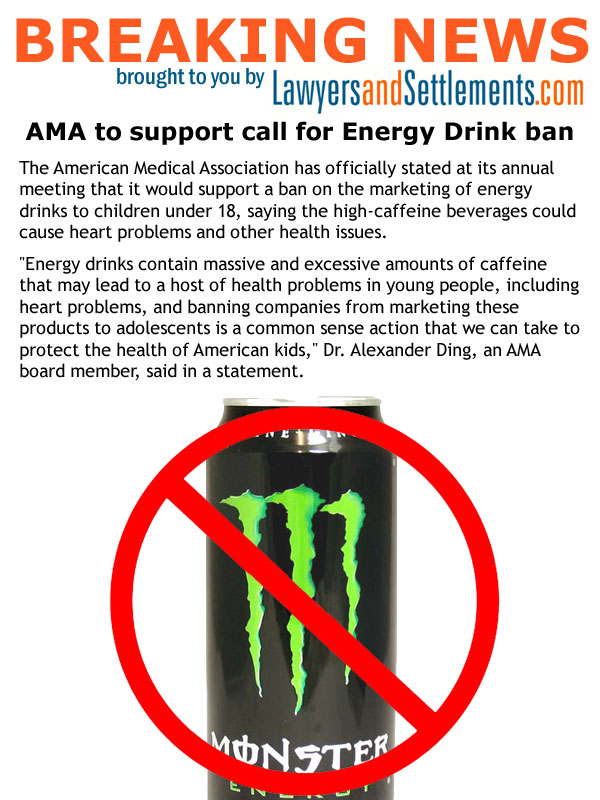
The 17-20 age group is marked by both high and carefree caffeine consumption that can add up to dangerously careless. In particular, they can overdose on the caffeine-reinforcement beverages of which Red Bull is one of the milder ones. The Illinois Poison Center reported an “alarming” 250 calls over three years of tracking. 12% required hospitalization. The average age was 21. “Caffeine exaggerates the stress response.” It switches off the adenosine modulator that avoids over stimulation of the nerve cells.
Energy drinks are a public concern, with calls to regulate sales to those under 18 in a number of states. In 2018 the FDA banned “bulk package” tubs and gallon containers of pure or highly concreted caffeine. 1 teaspoon is equivalent to 25 or so cups of coffee, a toxic dosage.
For pregnant women, 200 mg is viewed as safe. The likelihood of miscarriage is directly proportional to caffeine intake and low birth weight. It does not seem to impact early birth delivery. There is a definite link between caffeine and children’s leukemia, attributed to its altering fetal DNA. It similarly affects brain development and is highly correlated with child obesity.
Learn more about caffeine’s impact on breastfeeding here.
Conclusion
This is a briefing not a position paper, but here are a few concluding opinions:
- Caffeine is a personal choice, exactly as for sugar and salt. The evidence is strong that it is less harmful than sugar, which may be the best target for dietary change.
- The best advice is to listen to what your own body is signaling. The genetic aspects of caffeine are far larger than is apparent in the ads and talking up of diets and products. There’s a tendency to treat caffeine as a moral or lifestyle issue. It’s more your biology in action. It’s not good for a stressed person. It seems fine for most people.
- Don’t underestimate the positive wellness elements of caffeine. It gets bad press in most regards but it is as effective in neurological, cognitive, and mental health as green tea is in areas of disease prevention and palliation.
- This is a mind-body debate. If you’re not comfortable in your mind about it, don’t consume it. If you are fine with it, stick to the simple metric of no more than 400 mg, and preferably 300, assuming 40 mg per cup of tea and 100 for coffee.
EDITOR’S NOTE: This post is an outstanding example of why Peter Keen was a finalist for Tea Health Advocate in the 2019 World Tea Expo Awards.
Tea Market
Get More Value from Your Tea: BRU Maker One
+41794574278
Jacque's Organics
(647) 804-7263
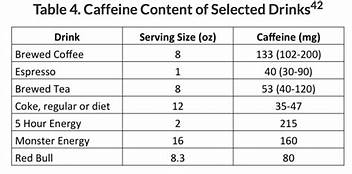
This article was informative and interesting.
Caffeine can affect many after a certain age more than before